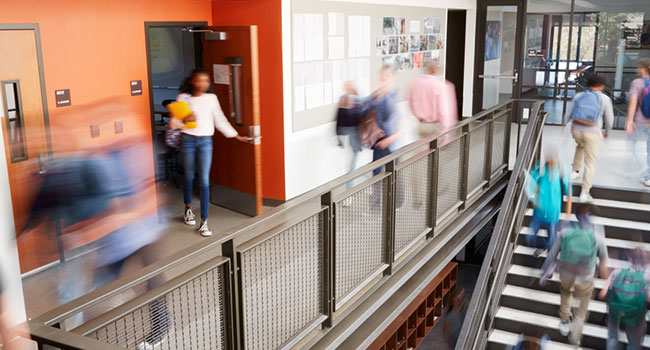
Michigan School Undergoes Redesign To Reduce Impact of Mass Shooter
Fruitport High School is spending $48 million to add curved hallways, hiding areas and classroom doors that can be locked remotely as part of its efforts to make students and staff safer.
- By Haley Samsel
- August 26, 2019
A Michigan high school is overhauling its current facility design to decrease the amount of people a mass shooter can injure or kill in a matter of minutes.
Fruitport High School is undergoing a $48 million construction project that will add curved hallways to reduce a shooter’s range, jutting barriers and new classrooms that allow students to hide without being seen from the doorway, The Washington Post reported.
Bob Szymoniak, the Fruitport superintendent, told the Post that the project is entirely motivated by his desire to improve student and staff safety and reduce the damage a shooter could do.
“If I go to FPH and I want to be an active shooter, I’m going in knowing I have reduced sightlines,” Szymoniak said about the redesigned hallways. “It has reduced his ability to do harm.”
The district is just one of many rethinking its approach to school safety, particularly in the wake of increasingly deadly shootings at schools in Parkland, Florida and Newtown, Connecticut, among others. Parents worried about shootings have fueled the massive increase in bulletproof backpack sales.
And in Jefferson County, Colorado, teachers attending their annual professional development training were given buckets and cat litter for their classrooms. The reason? Kids might need to use the bathroom during an active shooter situation, and the buckets could be their only option.
Matt Slagle, an architect who worked on the project as director of K-12 projects at TowerPinkster, said the hiding areas and the capability to lock classroom doors remotely would make it difficult for even shooters familiar with the school to get around. He added that no security measure can fully prevent a tragedy.
“We’ll never make it completely safe from someone who desires to cause harm,” Slagle said.
The redesign, which is set to finish in 2021, toes a tight line between improving security and making students feel like they are in an unwelcoming fortress. Slagle’s firm worked hard to avoid the latter.
While Szymoniak said he would rather be focusing on student success, school safety is at the forefront of his mind and the community he serves.
“I don’t want to have to have these conversations,” he told the Post. “I don’t want to have to worry about having a school designed to prevent an active shooter.”
About the Author
Haley Samsel is an Associate Content Editor for the Infrastructure Solutions Group at 1105 Media.